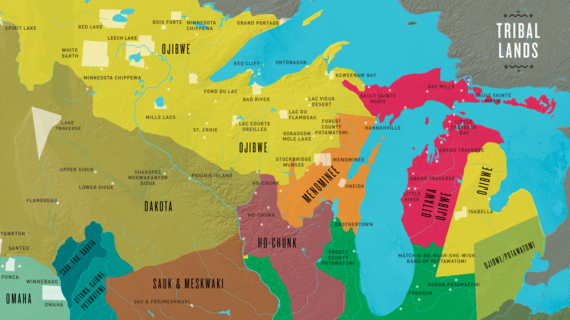– Welcome everyone to Wednesday Nite @ the Lab. I’m Tom Zinnen. I work here at the UW-Madison Biotechnology Center. I also work for the Division of Extension Wisconsin 4-H. And on behalf of those folks and our other co-organizers, PBS Wisconsin, the Wisconsin Alumni Association, and the UW-Madison Science Alliance, thanks again for coming to Wednesday Nite @ the Lab. We do this every Wednesday night, 50 times a year. Tonight, it’s my pleasure to introduce to you Jonathan Martin. He’s a professor in the Department of Atmospheric and Oceanic Sciences, and he’s gonna speak with us tonight about warmer winters and wavier jet streams, the cold season, and a changing climate. I now get to ask him five questions. Jonathan, where were you born?
– Salem, Massachusetts.
– And where’d you go to high school?
– St. John’s Prep School in Danvers, Mass.
– Danvers, very good. And then where’d you go for undergrad and what did you study?
– Saint Louis University, and I studied mathematics and meteorology.
– And then where’d you go for your advanced degrees?
– University of Washington; that’s where I got my PhD.
– Very good. And then did you come directly here, or did you. . .
– I did a two-year postdoc there and I came here in ’94.
– ’94, way to go. Well, I’m looking forward to this. It’s always great to hear about jet streams, especially when they’re not hurting us. [Jonathan chuckles]
– Yeah, right.
– Would you please join me in welcoming Jonathan Martin to Wednesday Nite @ the Lab? [audience applauding]
– Thank you, Tom, for that invitation tonight to share with all of you some of the recent work that my group’s been doing, seeking to characterize the cold season in a changing climate. It’s work that I hope will catalyze some new research initiatives that will expand our knowledge about this kind of important issue. And I come to it as a person interested in weather systems predominantly. So I’ve kind of stumbled into these issues that kind of bleed from weather systems toward larger and longer timescales that get into the climate. So I hope you enjoy what I have to tell you. And I don’t consider it to be too dire. We have some opportunities for things to get better, but we’ll have to talk about that in our question and answer. We live on a beautiful blue planet. I just finished a book about the dinosaurs. They ruled this place for 150 million years. Isn’t that unbelievable? And there were 67,000 generations of T-Rex before they got destroyed by the asteroid impact that hit right in the Gulf of Mexico, right there. But it’s a beautiful planet covered mostly with water, and it’s got clouds made of ice and liquid water that takes shape in a whole menagerie of storms that populate our beautiful atmosphere. And so it’s a pretty interesting place.
This, you’ll have to stare at for a few different moments. It’s every three hours, an infrared satellite moving over a period of about a week in late October 2009. And I show you this because I want to discuss the fact that we live in an era in which prediction of all of these swirlies floating around in the middle latitudes especially, can be reliably made several days in advance. And this is a result of remarkable advances in theory in this century, observing technologies, and computer power, a perfect confluence of circumstance. And that makes us the first generation to either be born into it or live our lives in a period of human history where we can make long-term, that is three to five to ten-day forecast, with reasonable accuracy. It’s hard to imagine that my own dad, who’s now gonna be 90 or 89 in May, when he was born, there was no such thing as even a one-day forecast that one could rely upon. It’s incredible what’s happened in a short amount of time. And prediction of these swirlies, these weather systems in the middle latitudes and the convective systems in the tropics requires, if I wanna make a forecast of the weather two days from today, I need to know what the initial conditions around the entire globe are right now. And then I use those initial observations combined with theoretical expressions for the mathematical equations that describe the behavior of the atmosphere, and throwing all of that at the computer in sophisticated ways to make a reasonable forecast of what’s gonna happen in the next couple of days.
It’s incredibly dependent on initial conditions. What are the conditions right now and how will they impact the development of weather systems on the ten, or the three to five to ten-day scale? Climate is not an initial boundary problem, not an initial value problem, it’s a boundary value problem. We need to know the boundary conditions of the climate system. The mean state of the climate is determined by emission of radiation by the Sun.
That’s a boundary condition. The Earth’s rotation rate, which is one day, but it’s not always 23 hours and 56 minutes. It’s kind of sped up and slowed down over geologic time, but not by very much of an amount, and how it orbits the Sun. And that procession is about 140,000 or so year time interval. And the composition of the atmosphere. What is the mixture of gases that compose our atmosphere? All of those are boundary conditions. Now one of the things that I think is important at the front end of a talk that talks both about weather and climate is to kind of disentangle the notion of initial conditions and boundary conditions.
And I’m gonna do it, Tom will like this, I didn’t even realize; I forgot about this, he’ll like this, by a visit to Fenway Park. So baseball and boundary conditions, what are we talking about? Well, if you go to the game on a given day and you want to, you know, you root for your team, the outcome of the game that you witness is not determined by boundary conditions. It’s determined by initial conditions. Who’s pitching? Can the lineup, can the Red Sox hit this person well? Who’s hurt in the Red Sox lineup? Who’s hurt in the Yankees lineup? And so on. Is the wind blowing in or out? Those are all initial conditions that upon which the outcome of the game might determine. Now, boundary conditions are different. All the bases are 90 feet apart. If that were slightly tweaked, what if they were 85 feet apart instead of 90 feet? Cardinals would’ve won the World Series in 1985. All sorts of other things you could think of would be different, right? That’s a boundary condition tweak that would make everything about the game different. You’d get more hits beating out infield hits, there’d be more runs, everything would be different about the game. The pitcher’s mound is 60 and a half feet away from home plate; that’s a boundary condition. If it were 60 feet or if it were 59 feet away, the pitchers would have even more an advantage than they do right now. In fact, in 1968, Carl Yastrzemski led the American League with a .301 batting average. It’s almost as bad as last year. And Bob Gibson had an ERA of 1. 12. The league said, “We gotta change something about this.” What did they do? They made sure that the height of the mound was mandated to be only ten inches high. So that’s the only part of the field that’s elevated, the mound. And now, in every ball park, it’s the same. Before 1968, it was variable, up to 15 inches. Another boundary condition tweak that changes the nature of the game. So it’s the nature of the game that’s affected by the integration of all these different conditions.
So I’d say all the boundary conditions, as I said, determine the nature of the game of baseball, the frequency and types of offensive success, dominance of pitching, all of that, but they never determine the outcome of a given contest. And in that way, there’s a similarity. The weather is like the outcome of a given contest, the climate is the nature of the game, and it’s boundary conditions that influence the climate. One of those that we’ll focus on right now is the composition of the atmosphere. What is the mixture of gases and what are some of the characteristics of some of those gases? Well, a number of different chemical constituents in our atmosphere have the characteristic that they’re transparent to solar radiation, the same way a window is, and yet they are translucent to infrared radiation, which is just a different kind of radiation on the full electromagnetic spectrum. Any such gas is known as a greenhouse gas. And look at this; these are the universal fingerprints in the absorption spectrum of various gases, methane, water vapor, carbon dioxide. No matter where you are in the universe, water vapor is gonna give you that fingerprint in terms of percentage of absorption all the way up to 100%, and wavelength of radiation. And about six microns of wavelength of radiation, water vapor would, if you shine six micron radiation through a cloud of water vapor, it all gets absorbed. If you shine four micron radiation through a cloud of water vapor, it all gets right through it as if it weren’t there. And that’s what these various fingerprints tell us.
If we add up all of the gases in our atmosphere, and the bottom panel is the total atmosphere. The visible wavelengths of electromagnetic radiation, the ones to which our eyes are sensitive, almost nothing in our atmospheric column absorbs that. That’s why we see the Sun. That’s why we see all the different colors in the visible spectrum. Now, if you go out to about ten microns in the infrared, it’s almost completely empty in terms of absorption, but not quite. There’s a little bunch of spikes in the middle and then you notice it’s a little bit dirty here at the bottom. So we’re in the 20%, maybe 15% to 20% range across a whole wide range of wavelengths. That’s enough to change the way that the radiation emitted by the surface of the Earth upon receiving solar radiation gets through our atmosphere.
Watch this. So here’s the Sun; cloudless day, let’s assume, and there’s sunshine coming right through our atmosphere. Our atmosphere is transparent to that solar radiation. So it gets all the way down to the ground. There’ll be some reflection off of clouds, there’ll be some reflection off of the sea surface cloud, tree canopies and so on. So some of that gets bounced back to space, but a large fraction is absorbed at the surface of the Earth. That warms the surface of the Earth up. And when the Earth warms up, it also emits radiation, but not solar radiation. It’s constrained to emit radiation in a different wavelength, and that is the longer wavelength infrared. The atmosphere, though, is in the way between the ground and outer space, and that atmosphere is another separate object that absorbs a good fraction of this outgoing infrared. And some half of that fraction gets re-emitted back to the surface. So the surface of the Earth receives an input of radiation from both the Sun and from the overlying atmosphere. Consequently, the surface temperature of the Earth has to be warmer than it would be if we were just illuminated by the Sun with no atmosphere.
In fact, you know what the difference is? If we had no atmosphere, the average surface temperature of the Earth would be 0 degrees Fahrenheit given our distance from the Sun, not changing the solar output or anything, just no atmosphere. The actual average surface temperature of the Earth is 59 Fahrenheit. And that crosses a really important threshold, which is liquid water is available after 32 degrees Fahrenheit. So we wouldn’t even be talking to each other if there were not, in this thin atmosphere that covers our Earth, this characteristic that it absorbs some fraction of outgoing infrared radiation and must, as a consequence, re-emit some of it back down to the surface and warms us up. So we have a natural greenhouse. We’re not the only planet in the solar system that does. Venus has a greenhouse. I’d say it’s unnatural, it’s runaway, it’s extraordinary. The surface temperature of Venus is about 850 degrees Fahrenheit, and that’s way beyond what it has a right to expect being as far away as it is from the Sun. They have almost all carbon dioxide in their atmosphere, totally different from us. So we have a natural greenhouse.
And here’s one of the consequences of that. If you go down to the South Pole, Vostok was one of the Russian stations down there. And you drill a really deep ice core on the continent, that is effectively a history lesson waiting to be exposed because all of that ice has accumulated over all this long amount of time, 400,000 or so years in this particular instance. And if you’ve ever gone skating on the lakes, like in Lake Monona in the wintertime, you notice as you’re skating, little air bubbles. And it stands to reason that the air within those bubbles trapped in the ice has exactly the same chemical composition as the air you’re breathing while you skate around the pond, and it’s true. So these ice cores give us the opportunity to look at the chemical composition of the Earth’s atmosphere all the way back to as long as those ice cores exist, and it’s about half a million years in this instance. And so, I don’t know how to do it, I’m not a chemist, but you bring these things into the lab, you carefully take the air out of the bubbles, and you do an analysis of what’s in it, and you can reconstruct with some degree of accuracy, the carbon dioxide concentration in number of molecules per million molecules.
So it ranges from around 300 to 80 at the first point there at its high points down to about 180 parts per million. So that seems to be about the natural range that the Earth has enjoyed over the last half million years. And there’s other epics that can be maybe analyzed with other proxies, but for this, we’re using the ice core. And you can see, there’s gigantic swings over long periods of time. So the x-axis is years before the present. So every one of these intervals between long dashes is 50,000 years. You got a 50,000-year period where you’re having a rapid decline in the carbon dioxide fraction. And then another roughly 50,000, maybe 30,000-year period where there’s another increase, and then 50,000 to 70,000-year decline and so on. So when people say, “Is there a background variability in the carbon dioxide fraction?” Sure, there is, absolutely right. But look at the time scales on which it operates. On average, tens of thousands of years. And the range is confined between 300 and about 180.
Here is using different proxies, which might be a little bit more accurate. You can actually look at a closer up time in the past, the last 2,000 years. So carbon dioxide’s red. I forget what the proxies are; I’m sorry about that. They’re not air bubbles anymore, but you see a fairly steady value at 280 parts per million until about 1700, 1750, and then what happens, it goes way up to something like 370 by about the year 2000. The same is true of methane, which is in blue. It’s fairly constant, although a little bit of an increase, and then a rapid increase. And nitrous oxide, laughing gas, is in black, and it does the same thing. So those are all three greenhouse gases, and they all have a rapid increase beginning around 1750. You can go to direct measurements even over shorter periods of time. This is the Mauna Loa trace of carbon dioxide that was instigated by Ralph Keeling in 1958. And it’s on the top of Mount Mauna Loa of 10,000 feet above sea level, approximately, in the middle of the Pacific, far away from industrial sources and so on, and well above the boundary layer of the atmosphere. And the black line is the long-term average, or the yearly average, sorry, and then connected. The red line is a little bit of up and down every single year. When the leaves come out like they’re about to now, that takes a lot of carbon dioxide out of the Northern Hemisphere atmosphere, around the whole hemisphere, so there’s a little bit of a decline. And then in the autumn and the winter, when there’s no leaves, no leafing, you end up with an increase in the carbon dioxide. So that’s an annual cycle and it happens every year, but it’s meandering around an increasing average value for the year.
All the way out to this year, last month’s average was 420. 41 molecules per million of carbon dioxide. And look where it started, 310 in 1960. And that was already a little bit higher than what you see in the ice cores from the last 400,000 years. So this has been a steady increase. When I started college in 1982, I thought, “I wonder what’s gonna happen in these next few years?” It’s growing and it hasn’t stopped growing. So that’s a big change in the composition of the atmosphere. Carbon dioxide is one of the primary gases that does this absorption of outgoing infrared radiation and then re-emission. So the more of this you put in, the more likely you are to intercept the outgoing radiation, absorb it, and then re-emit it back to the surface. So that’s gonna increase the amount of re-emitted infrared radiation that hits the ground, and it warms the planet up. There’s no disputing that physical argument.
And look at this, if you go back to the ice cores using isotopes of a variety of different gases, not just direct measurements of the composition, you can kind of get an estimate of the reconstruction of temperature differences compared to the current day, which would be zero would be the current day average. So when the carbon dioxide fraction goes down, the temperature of the planet, at least that location, goes down. And when the carbon dioxide fraction goes up, temperature goes back up. And I did for a simple example, these lines are not perfectly correlated. It’s not a 1. 0 correlation, but when you lay this one on top of that, boy, you’re hard-pressed to see much difference. It’s pretty awesome. So the global average temperature does in fact follow carbon dioxide concentrations. This is the foundational principle for discussing why is it that the planet seems to be warming up, and then what’s the evidence that it’s warming up.
Here’s one piece that’s really interesting, and it’s got a Wisconsin connection. John Magnuson at the Center for Limnology did this study, starting in 1995. It took a long time to acquire all the data. They looked at lakes across the entire Northern Hemisphere and they had a collection of hundreds of lakes at first, and they each had to have this characteristic. They had to have an ice duration season record of at least 150 years, otherwise they were cast out of the possibility of being in the study. Then once they had the 150 or so, they had to make sure that they were evenly distributed as much as is possible across an unevenly distributed land mass in the Northern Hemisphere. They ended up using 38 of those 150-ish lakes and examined them over the period from 1846 to 1995. And the results were that, on average, across all of those lakes, the ice was going on at the beginning of the season about nine days later in 1995 than it had been in 1846. And it was coming off about ten days earlier in 1995 than it had been in 1846. So that’s pretty hard to argue with.
When I first came here and people were telling me about Lake Mendota’s record, which I’ll show you in a minute, I said, “Oh, come on. You could have an exceptionally cold early December and put the ice on early. You don’t put a lot of stock into one observation.” But if you have 38 observations distributed around the hemisphere, it’s really difficult to say anyone was cherry-picking. And you get this as an average result. Here’s Lake Mendota, and it goes back all the way to 1851 or ’54, I think, in terms of its ice duration season. And Lake Mendota is the most studied lake in the world, not for climate only, but we studied biology, all kinds of other things. That’s amazing, isn’t it? When you think about Lake Victoria, the source of the Nile, is not as well-studied as Lake Mendota. That’s unbelievable, but it’s true. Eighteen days, which is about what you would get from the long-term hemispheric average, that represents, as you can see, the average is about 105 days, that represents nearly 20% of an average season. And that decline has occurred since about 1846, nearly the beginning of this time series. So the black is the year-to-year variability, it’s substantial, but the red is a five-year running mean and it’s got steps going down, there’s just no doubt about it. The length of the ice season on Lake Mendota is way shorter today than it was a hundred years ago. So that’s pretty interesting.
So there’s all sorts of different pieces of evidence that one can use to bolster the notion that the planet’s warming up as a consequence of increased concentrations of carbon dioxide. One of the things that I stumbled into was related to this picture right here. We had the winter of 2011 and ’12 going on here, and my wife’s in the audience and she’ll contest that I get very frustrated when there’s a chance for a cold, snowy winter or cold, snowy week and it does not materialize. And I’ve somehow, I’ve gotten a little bit, wouldn’t you agree, Teri? I’ve gotten a little bit less frustrated by that as the years have gone by simply because I’m submitting to reality. But in this particular year, for some reason, I was really frustrated. It was snowing, it snowed in Tripoli, Libya, it snowed in Morocco, it was freezing cold in Alaska, and we had almost nothing going on here in terms of the winter weather, and I was really frustrated. So I said, “You know what? I’ve got to beat this parochial sense of the winter. How can I make an assessment of how intense the winter is by something else that’ll distract my attention when I’m frustrated and reinforce it when I’m excited?”
So I thought, one of the things that I always look at when we have an impending snowstorm is where is the -5 degree Celsius isotherm line of constant temperature at 850 millibars, which is about one mile above sea level. That turns out to be a really decent guide as a dividing line between where it may rain and where it may snow. So if you’re on the cold side of that, you’ve got a really good chance of seeing snow out of the storm. If you’re on the warm side, you’re riding the fence. So I thought, why don’t I just take the -% degree isotherm at 850 millibars, one mile above the ground, over the entire Northern Hemisphere? And that’s what the dark blue line is here, including all these little spots. And then I shade in the spots where it’s colder than -5, or it’s equal to or colder than -5. You can easily calculate this area. I get data like this four times a day. I discovered at the point when I was beginning to think about this that I could get access to what’s called a re-analysis data set that uses all the historical observations. They were fewer and fewer as you go back in time. And constructs, reconstructs a reasonable proxy for the temperature structure throughout the atmosphere. I could go all the way back to 1948.
So I thought, “Why don’t I start looking at the average areal extent of the 850 millibar cold air at -5?” This is what I got; look at this. Every one of these dots represents a 90-day, December 1 to February 28, average of that area for the Northern Hemisphere. And I get four observations per day, quote observations per day, re-analysis observations per day. So that’s, every dot represents an average of 360 values, in this case, for the December, January, February of 1948, ’49. And there is December, January, February ’22, ’23. And look at what happens to the -5 areal extent. It gets systematically smaller. Not uniformly smaller because there’s ups and downs, but it gets systematically smaller along that black line, which is the slope. That line is the trend line and it’s significant at 99. 9%, which means is a one in a thousand chance that this is by accident. There’s something going on physically here, and it’s true at all these other threshold temperatures: -10, 15, -20, -25, all of them. And the Arctic Sea ice in the wintertime decreases right in between the -25 and -20. So they’re all changing at the same rate and that’s really pretty interesting. And there’s three different data sets that say the same thing. There’s overlap between the blue and the red and the green. They all are saying exactly the same thing. So this was really interesting to me, and this is where I first stumbled into these kinds of problems.
The Northern Hemisphere cold pool is systematically shrinking during the wintertime, okay? Wow. And if you want to, you can start to look at a whole bunch of other things. This is the daily time series from the last winter from December 1 to February 28 of ’23. So the red line is the actual value that you measure every day during last winter, or the winter that ended two days ago. Then the solid blue line is the 75-year calendar day average, just connected across all those days. And then the gray shading represents plus and minus one standard deviation away from that average. Then the thin blue lines finally represent the minimum value ever recorded for January 2 and the maximum value ever recorded for January 2 over the 75-year time series. So there’s a lot of information on that panel all at once. But look what happened last winter. Around the hemisphere, and it doesn’t necessarily, as you’ll see in a minute, it doesn’t necessarily mean here in Madison, but around the hemisphere, we had a really cold mid-December. First time in years as it turns out that we got over one standard deviation above the average for the days, there around 10th, 12th, 13th of December, and then flat-lined until almost the middle of January. And then a big increase in the cold pool area into early February, and then it pretty much decayed away, again, quite rapidly away from that.
What you can do is look at other years, too. It’s kind of fun to do that. Oh, I should say, this was the 16th warmest, so smallest area would be warm, largest area would be cold. This was the 16th warmest December, January, February since 1948, ’49. And that’s perfectly middle of the road. Actually, it’s not middle of the road, it’s 80th percentile, but it’s kind of middle of the road for what we’ve recently done. In the last 20 years, 18 of the warmest 20 have occurred since 2000. That’s amazing. So talk about loaded dice, right? Here’s 1972. I point it out because a few of the days right around February 1 were days in which the daily value was more than two standard deviations above the calendar day average. And maybe it’s more than three, but I’ve highlighted those three days. Then in ’21-’22, we had at least one day where the actual value on the December 15-ish was two standard deviations below the calendar day average. I’m gonna call these extreme positive deviations really extreme cold days, and I’ll call these extreme warm days. And then we’ll just look at their distribution over the last 74 years.
Look at this. And it’s actually not, I only went through about 2013 for this diagram. However, I got the numbers right, I’ll show you in a minute. The two sigma cold events, the days where you were way above the daily average areal extent of the cold air, they happened with some degree of regularity up ’til about 1994. In fact, February 12 and 13, 1994 was the last one we’ve ever had in the Northern Hemisphere. That was ten days before I interviewed for this job, which I’ve had for almost 30 years. They don’t happen anymore. And then these are the two sigma warm events, the unusually small areal extends. We had a few of them in the ’50s and ’60s, but they’ve really started to pile up since about 1990. And I’ll put some numbers to it. There’ve been 117 individual days that have qualified as two sigma cold events. Not a single one since 1994. There have been, on the other hand, 246 extreme warm days, 163 of them since the year 2000. That’s a loaded die. That’s amazing if you think about it. Never happened since I’ve been a professional at the University of Wisconsin. And easy money, if you can find a sucker who doesn’t know about this and you bet him this, you’re gonna win. It’s a guarantee. There’s no way you’ll lose that bet.
What about regionally? What does it mean regionally to think about the cold air? Well, what if we just isolate the northern plain states and southern central Canada like this, and then I do this; instead of just using only the -5 isotherm, which is right there, you could calculate the area that’s inside there. But what if I add up all of the different thresholds, -5 area, plus the -10 area, which is smaller, plus the -15, plus the -20. I don’t put a -25 on here, but there could be one. So I add up all of these different areas, and then I look at that long-time series. Well, here’s what happens.
First, I’ll remind you of what happens when you think about -5 across the whole Northern Hemisphere. It’s a little bit of a hump ’til about in the late 1960s, and then a steady decline. In fact, I’ll help you with a slope line. And then if you do just the central U. S. northern plains, whoa, wait a minute. Doesn’t look anything like it. Starting at the same point, the trend line is about flat. So look at that. There’s no change at all. So if you’ve had the impression since the 1960s that there’s ups and downs– Oh, I did it again. [laughs] That there’s ups and downs in the time series from winter to winter; you’re right about that. But if you also thought it’s not getting systematically warmer or colder around here, you’re apparently also right about that. So the hemisphere behaves one way, but a region, a small region of the hemisphere, might behave quite differently. And that’s a little bit like the distinction between weather and climate, and it’s important to keep that in mind. I think one of the ways people judge whether or not they should believe statements made by scientists who are studying the climate is, “Well, I don’t know, it snowed here in April. I don’t think there’s such a thing as global warming.” That’s not really the right way to look at it. Although it is interesting that it snowed here last April, I’ll agree with you, but it’s not really the right way to criticize that statement.
Look at the correlation between these two lines. It’s only 0.25. They have almost nothing to do with each other. So that’s kind of interesting. The trends that they express don’t look the same. So conclusions about the cold area. Over the last 74 years, the areal extent of the Northern Hemisphere wintertime cold pool, and I’ve measured it expressly over the hemisphere as temperature minus, colder than -5 at 850 millibars has decreased by 4. 5%. People say, “Oh, thank God, it’s not that much, 4.5%.” But we’re screaming and yelling the last 12 months about interest rates going 2 to 6.5. We care about that 4.5%. And if you take the standard sea level pressure of 1,012 millibars, which would characterize a normal kind of boring weather day and you drop it by 4.5%, you’re in the middle of a category three hurricane. The atmosphere doesn’t tolerate 4.5% without much of a fight; it doesn’t like it. So there’s something serious going on. The shrinking cold area is definitely a result of greenhouse warming.
Why? Think about it. You’ve got this cold area, and what you’re doing by making it smaller is you’re not attacking it in the middle. That stays cold; you’re attacking it at the edges. So there’s a little bit on the warm edges, there’s a little bit more absorbed, and then re-radiated infrared radiation to warm up those edges fractionally past -5. That’s why it’s shrinking systematically. You can’t just move the -5 isotherm around. That’s not how it works. Extreme cold events no longer occur while extreme warm events have flourished.
Here’s the score since February 1994: 194 to nothing. Now, any of you who play sports, whether individually or team, you don’t keep playing a game where you’re losing 194 to nothing over a period of 30 years. You kind of say, “I’m gonna drop out, I’ll find something else. Maybe I’ll take up golf.” I play my wife in tennis. I’m at about 190 and 2, and that’s not enough for me to keep going. I mean, but if I was 194 to nothing, be even worse. Differences in atmospheric circulation. The way the whole hemisphere circulates may also not only underlie differences in the interannual variability and volatility of the cold pool, but also may influence the cold pool in ways that we might be able to touch on when we get to the jet. So there’s some really interesting things going on here. Scientists, though, are a skeptical bunch, and I don’t say this as if it were a problem. I think that’s actually a virtue. And sometimes, it can cause you problems. You come home frustrated that you’ve gotta deal with these skeptical reviewers, but I’d rather it that way than everybody says, “Yeah, that sounds interesting enough. Let’s put it in the literature.” That’s not how it works. It’s hard to get a paper published. So in 1995, a group of about a thousand climate scientists convened for the second time. This was the Intergovernmental Panel on Climate Change Second Assessment Report written in 1995. And they said, “The balance of evidence suggests that there’s a discernible human influence on global climate.” Wow, that’s a courageous statement, right? That’s a statement with an agenda hidden behind it. No, it’s not. It’s a statement that’s as sober and carefully considered as you could possibly imagine, to the extent that it comes across as very vanilla, especially in retrospect.
Knowing that things were likely to change as we did more analysis and more observations over the years, and they were gonna try and have about a six-year cycle on an update of the Intergovernmental Panel of Climate Change Assessment, they thought, “We better get ready for what’s coming next.” And so some of the worst committee work of all time took place in the interval between 1995 and 2001. It was the IPCC committee on adverbs. And this is a true story; I know you’re laughing, but it’s a true story. They had to decide ahead of using these adverbs and adverbial phrases, what they meant. Exceptionally unlikely was deemed, by consensus, to mean 0% to 1% probability, and you can read the rest. Likely, 66% to 100% probability, virtually certain, 99% to 100% probability. This was a very smart move. Although if Dante had been aware of this project, he would’ve certainly have included it as one of the circles of hell. But you’d think you have to do this ahead of time because you don’t want to be accused of backloading the way you describe things. Here’s why it mattered. In 2001, the same statement in the third assessment said, “Most of the observed warming over the last 50 years is likely to have been due to the increase in greenhouse gas concentrations.” Remember, likely means 66% to 100% probability. More observations, more analysis, hundreds of people working on various problems. “Most of the increase in globally average temperatures since the mid-20th century is very likely due to the observed increase in anthropogenic greenhouse gas concentrations.” That was the fourth assessment in 2007. Very likely means 90% to 100% probability. Keep on going ’til 2013, “It is extremely likely that human influence has been the dominant cause of the observed warming since the mid-20th century.” And that’s in the 95% plus probability range.
And though it was delayed by COVID a little bit like everything was, the sixth assessment came out two years ago in 2021, and the similar statement just decided to drop the adverbs and say it’s unequivocal that human beings have been the cause of the observed change in the temperature around the globe since the mid-20th century, and actually it goes beyond past that. So we’re at the point now where anyone who continues to argue about whether or not the planet’s warming is really wasting everybody’s time. There’s plenty of room for debate, for argument, for disagreement about what we do about it, but there’s no room anymore for debating whether or not it’s occurring. And as I say, if you’re involved in that kind of an argument, you’re wasting everyone’s time. These are careful statements made at six-plus year intervals by a bunch of people who are skeptical of their own, and especially other people’s work.
So let’s move to the jet, which has been really fun for me. I’ve been thinking about the jet stream in the Pacific Ocean for a long, long time, and it occurred to me that it might be, there might be a way to measure how wavy the jet is. And so I want to tell you a little bit about that. I’m excited about it. Let’s start with this. There are two predominant species of jet streams that occur at the tropopause level in the atmosphere, and that’s between six and eight miles above the ground. If you’re in the tropics, the tropopause is higher than it is in the mid-latitudes. So it’s eight or so in the tropics. It’s about six miles above the ground in the middle latitudes. The jet stream gets its name because that’s where jets in World War II as they were heading for bombing runs in Japan near the end of the war, were headed straight into it ’cause it goes from west to east, and they’d get up to a height of about 30,000 feet on their ferry and they wouldn’t make any progress. And they realized there’s a stream of air here that is going on. And in fact, a Japanese scientist had discovered this in the 1920s, long before anybody from the West had figured it out.
But there are two predominant species of tropopause level jet streams. This is a single day’s weather map that I’m showing you here. And you can see on it two distinct regions of maximum wind speed. The colors here represent wind speed contours at a level that’s about six miles or so above the ground. And so you’ve got a really intense jet in the middle here in the white. It’s like 110 meters per second, it’s about 200 miles per hour. And then that’s the polar jet going into the Washington/Oregon coast. And then there’s, much farther to the south over Baja California, a subtropical jet. What gets difficult, though, if you wanna measure how wavy the jet is, is the problem that what I’m showing you here are, again, lines of constant wind speed. They’re called isotachs. I don’t wanna draw every single value, so I start at 30 meters per second, which is about 60 miles per hour, and then I contour them every ten, so I got 30, 40, 50, and so on. But you can see it’s discontinuous. How do I know where the jet really goes across the Arabian Peninsula and India and Pakistan? I don’t really see it here.
I have a method, though, developed with a graduate student of mine who’s now gone from the university, where I can tell which one, which portions of these regions of high wind speed are subtropical jet in red or polar jet in blue. And that can be of interest for the development of weather systems. One really cares about that, as it turns out. But what I’d really like to be able to do is make those lines that are solid where they’re inside the isotachs, make them continuous by some objective method. How can I do that? So I thought about this for a long time. What’s a way to do it? Well, I took advantage of something that we know about the jets, and that is that here’s one of those maximum of wind speed. They tend to flow along what are called lines of constant potential vorticity, isertels. And potential vorticity is a variable that measures something about the shear and the flow as well as the speed. And so there’s a whole bunch of them that bunch up in the middle of these strong regions of wind speed at the jet at the tropopause level. And so if you decide that you’re gonna search around the whole hemisphere and add up, this is what the integral sign means, it means add things up, and what you’re adding up is the product of the wind speed along a certain little length of one of these red lines.
So right at the j, I have a really high wind speed. If I divide this line into equal segments, I can get a contribution to the total circulation from that little segment, add it to the one next to it on the same line and so on. And adding that up around the whole hemisphere gives me a measure of the circulation on each one of those red lines, those isertels. Then I figure out which one of those isertels has the greatest average wind speed around the hemisphere, and that’ll be the core of the jet. So that’s how I do it. I figure out what the core of the jet is using this circulation theorem. I can take a set of isotachs, this time in gray, and I can objectively determine where is the core of that jet. And this is done by a calculation, not by eye, but look at how it fits. If I were to draw this by eye, I’d want to put that black line right through the middle of the highest value, there, and again, right here over India and Pakistan, and then over here in the eastern part of the– or the western part of the Pacific. It’s pretty darn good.
But there’s places where it looks orphaned. What’s this? And I put a blue line through it for a reason that you’ll see in a minute. And I come up with a value. What’s the core value, the core isertel value? One and a half potential vorticity units. This is the underlying subtropical jets up high, polar jets down low, this is the underlying polar jet isotachs on the same day. And look at how that black line fits right in the middle of most of them. It’s not perfect, but it’s really good. And yet there’s this piece that’s in red that’s kind of off and away. Watch this. If I go back to the prior one, keep your eye on India. Oh, my God, that’s right where the subtropical jet that’s above it is maximum. And look at this blue thing. What about here over Scandinavia? Watch this. Oh, my God, that’s where this underlying polar jet has its maximum. So all these things are pretty much accounted for, even though they might look a little bit awkward from one level to the next. Anyway, what I do, I’m really confident in this. What I do is I, these are the two days with the core isertel only indicated on both subtropical jet and polar jet levels in the atmosphere. I calculate the area inside this. So I had this program that I wrote that calculates the area of closed contours in gridded data sets. I wanted to use it every way I could, so you can tell I keep on doing it, but it works.
So I calculate the area, do the same thing here. Then I figured out what’s a perfect latitude circle, north of which the exact same area is enclosed? I call that the equivalent latitude for each of these. So this, they both have different ones. So remember, the area inside this black curve has a certain value, and I’d tell you that that area is exactly the same as the area that’s enclosed poleward of this perfectly circular line around the hemisphere. And then I do the same thing over here. It’s a smaller area, you can tell by eye. It’s just not as big an area inside the black curve here. And naturally, the equivalent latitude circle is going to be smaller. So here’s what I do next. I say, at some longitudes around the hemisphere, the core isertel, the core of the jet, is polarward of my equivalent latitude line. And all those places are indicated with these red segments, same for the polar jet. They all have a certain length, every one of them. And there are certain longitudes where the core isertel is equator-ward of the equivalent latitude. And those little segments also have a length. I just color them in blue so you can see the distinction. I add up the absolute value of all of those segments, then I divide by how many longitudes I counted on, and I get an average latitudinal displacement of the jet from its equivalent latitude. And that’s what I call it, ALD.
Look at this; you could tell at first that black line is not as undular as this one. And the number that I get by the method I just described is a lot smaller for the subtropical jet on this day than it is for the polar jet. And that’s a reasonable way to measure how wavy it is. It’s relative measure, but it works. And so that’s what I’m doing when I measure the waviness of the jet. And I’m excited about this, I know more than you are, [all chuckling] but I’m excited about it because I got into this debate quite by accident. I have a colleague who I went to graduate school with who was kind of in the middle of this debate, is the jet getting wavier? And they had a whole bunch of different methods that they were trying to use to measure that. And my specialty being weather systems, and the jet stream’s really a big part of understanding weather systems, I kind of looked at what they were doing and said to myself, “No, this is not really comprehensive. You’re not thinking about this in the most comprehensive way.” So I kind of entered as a critic and came up with my own method, and now it’s the accepted way to do it, which I feel pretty excited about ’cause it’s so simple-minded and easy once you get a couple of the calculations done.
So here’s what happens in the seasonal average in the Northern Hemisphere. The polar jet will always be in blue, the subtropical jet’s in red, the average latitudinal displacement’s on this axis. So you can tell right away, not unlike the picture that you just saw, the subtropical jet is systematically less wavy than the polar jet by this measure. That’s not untrue. And yet there’s a lot of year-to-year variability. And this is just the National Center for Environmental Prediction data set that goes back to 1948. The critics, when I submitted this paper said, “Oh, you can’t just use one data set. You’ve gotta use all of the re-analysis.” And that’s a good idea; it just costs me more work, but it’s a good idea. So the Japanese have a really even better, more sophisticated re-analysis. It’s called the Japanese re-analysis back to 1955. Actually, it’s the 1958. It was a 55-year time series, actually, at the time they published it. Look at that, it’s lighter blue, but it’s exactly the same for the polar jet and the subtropical jet. You can hardly tell there’s a difference between the two, even though they’re vastly different data sets. And then this is the tendency from about 1958 from the JRA in both of them. Both of these jets are getting wavier in the wintertime, and that’s a systematic trend. I think they’re significant at the 97% or 98% level. And then the European Center for Medium-Range Weather Forecast in England has its own re-analysis data set. I bet you can’t even tell I put it on there. It’s another light blue line and another light red line. They’re hardly distinguishable. So this is remarkable because these data sets are so different from one another and they testify to exactly the same thing, at least in the Northern Hemisphere.
So the polar and subtropical jets are getting wavier. That’s really weird. One of the other things that comes right out of the analysis, ’cause the way I find the core of the jet is finding the maximum wind speed. So I can tell you, I’ll go over that, I’ll go over that later maybe. I can tell you that the average jet core speed for the subtropical jet is in red for the two data sets, NCEP and JRA, and then this is, there’s two lines there, even though you can’t tell, that’s the polar jet. And these trend lines are not statistically significant and they hardly have any slope. So the subtropical and polar jets in the Northern Hemisphere are not systematically changing speed as they get wavier. Whoa, that’s weird to me ’cause that means the circulation around the hemisphere is increasing, and I don’t really understand that. Right now I don’t understand that. I’ve been thinking about this for years. How is that possible? But it’s in the data. So I’m just a scorekeeper here. And the other thing that falls right out is I find the equivalent latitude for every one of those daily scenes. And so I can get an average equivalent latitude, which is what’s the west to east average latitude of the jet every single day in the wintertime. Look at this, the polar jet for both of those data sets is marching poleward at a statistically significant rate. So the polar jet is encroaching on the pole in the wintertime. That’s really something. That means the storm tracks moving northward might be why we get less snow in central Illinois. Not so much here yet, but if the trend continues, we’ll be the next ones to get less and less snow and more and more rain. The jet’s moving poleward.
The subtropical jet isn’t moving anywhere, apparently. And that’s interesting too for other reasons. So I recently completed an analysis that does the same thing in the Southern Hemisphere. And so remember, the Southern Hemisphere is much more remote and it’s not as much land. And so we don’t have as many real observations, especially in the older days; since about 1979, we have satellite observations which we can use. But in the prior days prior to 1979, a lot fewer observations in the Southern Hemisphere. So the reanalysis products that are made from the fewer observations are often riddled with problems. I’m sure I’ll hear about this from reviewers, and I’m ignorant of all of this stuff. I don’t know; I just use it because it’s out there and people say, “Use it.” And then some of the reviewers will have their own pet analyses that they think are better than others, and then I’ll ask them privately, “How come it’s better?” Well, I just like it better.” That doesn’t count. Come on, you can’t say that to me.
So here’s the polar jet average latitudinal displacement. Wow, they’re not perfectly aligned the way they are in the Northern Hemisphere, but they all seem to be saying the same thing: the polar jet’s getting wavier in the Southern Hemisphere winter as well. And then the subtropical jet, the same thing. A lot less variability year to year in the subtropical jet. And amongst the data sets, they all look about the same. Wow, and the predominant jet feature in the Southern Hemisphere, as it turns out, is the subtropical jet. That’s different from our hemisphere, where they’re about even in the wintertime. And there’s just for comparison, the gray represents the subtropical jet in the Northern Hemisphere. And this is, the gray represents the polar jet in Northern Hemisphere. And you can maybe see the trend lines in the Northern Hemisphere right there and here for the subtropical jet. Those trend lines are about the same in both hemispheres. So both hemispheres are experiencing an increase in waviness at about the same rate, which I didn’t know until this week. So that’s interesting.
This is the average speed of the jets for both. The red is the subtropical and the blue is the polar jet. And here, especially in the beginning of the National Center for Environmental Prediction data set, you can see there was some trouble there in the ’40s and ’50s because there was just not enough observations. So one doesn’t really trust this very much and it is a wide outlier, but about 1960 on, they all pretty much say the same thing. There’s a steady increase in the speed of the subtropical jet in the Southern Hemisphere. That’s different from the Northern Hemisphere winter. And the polar jet down below doesn’t have any trend at all in its speed. So it’s getting wavier, but it’s also not getting faster like its cousin in the Northern Hemisphere, and there’s comparison to the Northern Hemisphere there. And you notice that the speed of the polar jet in the Southern Hemisphere is substantially slower than the Northern Hemisphere polar jet, like eight meters per second slower. That’s 15 or so miles per hour on average. And it’s about the same for the subtropical jets in both hemispheres. And then finally, are they marching poleward? It turns out both of them are in the Southern Hemisphere. The polar jet on the top is certainly going to higher and higher latitudes. They’re negative because you’re in the Southern Hemisphere, and then the subtropical jet’s doing the same thing. And there’s the, in gray, is the Northern Hemisphere, which is about the same for the subtropical jet.
But boy, look at that. The Northern Hemisphere polar jet gets a lot further equator-ward in the wintertime. It averages around 39 degrees, whereas in the Southern Hemisphere, it averages around 43 degrees. That’s a big difference. I’m not sure I understand that, but it’s in the data, as I say, so I like to make a point of that. I wanna go back to one thing ’cause I’ve got a couple of minutes to do it, and it was one that I glanced over a minute ago. This thing right here. So this is now a scatterplot. The red dots represent both the 850 millibar cold pool extent for an annual average and the annual average of the waviness of the jet. And in red, it’s the subtropical jet. There’s really no connection between how wavy the subtropical jet is and how much areal extent there is in cold pool because the subtropical jet is so much farther south than the farthest southern extent of that cold air in the wintertime. That’s why I think there’s no relationship. But if you go to the polar jet, oh, it’s very different. It turns out, and this was confusing to me at first, the polar jet, the wavier it is, the smaller the areal extent of the cold air. And if you have a non-wavy polar jet in a year, you have a lot more expansive cold air. I thought, “What’s going on with that?” But of course, if the jet’s wavier around the whole hemisphere, then you not only have more southward excursions perhaps of cold air, but you have a lot more northward excursions of warm air because the amplitude of those waves is increased. And so that in the end, it evens out and actually works toward warming the hemisphere up a little bit. So that’s interesting, but we have to continue to think more about that.
Okay, so let me get to the conclusions on the wave stuff. So the average latitudinal displacement, this ALD that I came up with is of the core isertel, the core of the jet. And it’s a deviation from the equivalent latitude of the jet is a really robust, and it’s feature-based metric of the waviness of the jet. That is, it’s based upon the actual observations in the data of the jet stream itself. So you’re not doing some other more complicated derivation of something. That’s it; it’s the jet stream itself. And you can figure out how wavy the jet is by carefully analyzing that. Both jets in the Northern Hemisphere are becoming wavier, but they are not changing their average wind speeds. That’s surprising, and it needs more explanation. I don’t have that right now as I’m talking to you. Both jets are creeping toward the pole, but only the polar jet in the Northern Hemisphere has a– It’s not only faster, it’s three times faster, but it’s only one of the two that’s statistically significant in its match toward the pole. The subtropical jet is not really doing that in a systematic way.
And the waviness of each jet, I didn’t show you this, but the waviness of each jet develops completely in isolation from the other. If you take the 75 years in the NCEP re-analysis or let’s just do the JRA, it’s a better re-analysis, is 58 or 62 years in that. I think there’s only five or six of those years where the correlation between the two time series of the waviness of the polar and subtropical jet exceeds 0. 3. So they don’t know anything about what each other are doing. And yet, there are occasions when the subtropical and the polar jets get really closely aligned in the horizontal and they produce much stronger wind speeds and much more substantial high impact weather. So it’s not that they don’t interact, it’s just that they don’t go searching for each other. They don’t have any idea where the other, what the other one’s doing. Clear example, the left hand not knowing what the right hand does. In the Southern Hemisphere, there’s one difference, and that is that the subtropical jet has gotten faster, and it’s migrating toward the pole at a statistically significant rate. That’s not true of the subtropical jet in the Northern Hemisphere in either case.
So there’s a lot going on here that is interesting. How does the warming of the planet, which is demonstrated by the cold pool, how in the world does that connect to these things? I don’t know that right now. In fact, that’s part of the debate that I’ve tried conspicuously to avoid. My colleagues are arguing about not only how to measure the waviness, but also what’s the interconnection. And I think they maybe made a mistake by not solving the one problem first and then inviting the second one. And that’s what I’m hoping I can convince, at least my close working collaborators, to engage with me on in the future, is trying to understand if there is a connection. And I think there is, but I don’t know what it is yet. So that’s what I have for you tonight, and I thank you for your patience and your attention, and I’m happy to take any questions that you might have.
[audience applauding]
Search University Place Episodes
Related Stories from PBS Wisconsin's Blog

Donate to sign up. Activate and sign in to Passport. It's that easy to help PBS Wisconsin serve your community through media that educates, inspires, and entertains.
Make your membership gift today
Only for new users: Activate Passport using your code or email address
Already a member?
Look up my account
Need some help? Go to FAQ or visit PBS Passport Help
Need help accessing PBS Wisconsin anywhere?

Online Access | Platform & Device Access | Cable or Satellite Access | Over-The-Air Access
Visit Access Guide
Need help accessing PBS Wisconsin anywhere?

Visit Our
Live TV Access Guide
Online AccessPlatform & Device Access
Cable or Satellite Access
Over-The-Air Access
Visit Access Guide
 Passport
Passport


















Follow Us